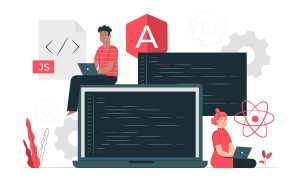Blockchain and cryptocurrency are closely related concepts because this technology underlies most currencies, allowing them to function and be a decentralized, secure, transparent, and anonymous means of payment available to work anywhere in the world.
The world has noticed cryptocurrencies with the advent of Bitcoin, whose Whitelist (project description) was presented on October 31, 2008. At the same time, Satoshi Nakamoto presented a technology that, although it existed before him, was unknown and unfinished. Since this period, blockchain and cryptocurrency have become almost synonymous with many technology fans. However, not all currencies work on this technology, just as blockchain is used not only in cryptocurrency projects.
The history of digital currencies began long before the appearance of Bitcoin. Still, they did not become famous for a simple reason: there were problems with reliability, transaction speed, and ease of use. Therefore, electronic money was inferior to such payment systems as MasterCard and VISA. It was with these problems in mind that Bitcoin was created based on the blockchain.
Blockchain is a technology that guarantees transactions without third parties’ involvement and stores data about them on multiple nodes. Hash algorithms (for example, SHA-256) ensure data immutability since any edits lead to a change in the hash. P2P networks allow the distribution of data, deprive the system of a controlling authority, making all participants equal.
Thus, digital money without advanced technology could not be:
- decentralized, without a control body;
- protected from intruders;
- profitable in terms of commissions (many cryptocurrencies can be received with minimal or no commission);
- easy to use and quick to exchange;
- traceable, but at the same time anonymous (the wallet number can track each transaction while the user’s data is securely encrypted).
How do Blockchain-Based Digital Currencies Work?
Blockchain is a distributed database that provides decentralization through peer-to-peer networks and security, transparency, and anonymity through hashing and encryption. The information about the transaction after its confirmation by the network participants – miners – is written into the block in encrypted form. Then it is duplicated and automatically added to all subsequent blocks along with new information, forming a chain.
In financial structures, during mutual settlements with fiat funds, due to the human factor or fraudulent actions, errors, failures, information substitution, transactions rollback, or retroactive transactions can occur. Cryptocurrency settlements eliminate all of these problems. In addition, coiners can be confident in the security of the system (for hacking and changing data, considerable computing power is needed, equal to 51% of the power of all nodes) and the safety of their data.
Importance Of Blockchain Technology in 2021
- Blockchain is a peer-to-peer network. This means that the data is not stored in one place but is distributed among all participants. To hack such a system, you will need to disable at least half of all nodes, which is almost impossible.
- In the blockchain, data is transmitted directly. The peer-to-peer architecture allows users to exchange information regardless of their location quickly. Blockchain is always available, has no limited hours of operation, and does not go offline during the holidays.
- Thanks to consensus algorithms, it is possible to get rid of the middleman. Since the data is distributed among all participants, they can check and confirm a new transaction. These users are called miners. The competition between them is high, which keeps commissions low.
- In the blockchain technology, the problem is solved using algorithms by which blocks are created. The web does not allow changes that most users disagree with. Thus, attackers cannot change or delete information.
- Any change in the information on the blockchain is a transaction. Transactions are written in blocks. The blocks are connected in a chain that cannot be changed due to the connection by hashes. Thus, each network member has access to the entire history of transactions, right up to the very first. At any time, you can check whether a particular transaction has passed between two participants.
- Simultaneous work on the blockchain is possible thanks to asymmetric encryption. When making transactions, each user identifies himself with a digital signature. At the same time, he and his data remain secret, as they are encrypted with a private key.
- It is clear that the blockchain collects all information about the movements and then transmits this in the form of transactions to the blockchain mempool. And there everything is as instructed – miners pick up information, count hashes, sign blocks to support the network, and receive a reward in the form of a commission that the guys paid during their transfers.
- The upper hand of blockchain eliminates delegates from an exchange and permits more self-sufficient kinds of agreements. By disentangling and accelerating monetary exchanges, blockchain replaces existing handling in banks and Visa frameworks. This assists with diminishing expenses for providers and clients in the corporate area.
- Organizations need the expense reserve funds that blockchain guarantees. Above all else, it can occur because of the speed increase of exchanges because, with the assistance of innovation, the customer’s cash quickly goes to the vendor. Second, speed increase stretches out to the whole production network and adds to consumer loyalty. Thirdly, blockchain works with circulation and coordination, and this likewise works on operational effectiveness. Fourth, by permitting you to dispose of the expenses related to overhauling bank cards and different administrations for business, blockchain diminishes overhead expenses, which is reflected in the expense of administration.
- A more intensive gander at blockchain and dispersed record innovation shows that they have established a genuine connection with huge banks, huge information laborers, web-based media, power plant supervisors, and web-based business pioneers. IBM is, as of now, utilizing blockchain to publicize cloud administrations for organizations.



































































